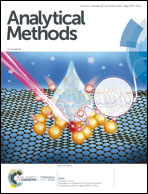1D convolutional neural network for the discrimination of aristolochic acids and their analogues based on near-infrared spectroscopy
Abstract
Chinese herbs containing aristolochic acids (AAs) have been implicated in renal failure and urothelial carcinoma. The detection of AAs and their analogues is significant for the correct use of drugs in clinical Chinese medicine. Traditional discrimination methods based on the near-infrared spectroscopy (NIRS) technique generally employ wavelength selection algorithms to eliminate redundant wavelengths before constructing the shallow learning classifier. However, wavelength selection algorithms are defective in increasing the complexity of the model and depend on skilled expertise knowledge. To avoid these drawbacks, an end-to-end 1-dimensional convolutional neural network (1D-CNN) model on the basis of NIRS is developed to distinguish AAs and their analogues in this paper, which extracts feature wavelengths from the original input data instead of using wavelength selection manually. Moreover, back propagation artificial neural network, support vector machine, principal component analysis combined with support vector machine and t-distributed stochastic neighbor embedding combined with support vector machine are established to make comparisons with the proposed model, respectively. T-distributed stochastic neighbor embedding (t-SNE) visualization results indicate that the 1D-CNN model has excellent feature learning ability. The experimental comparison results show that the generalized performance of the 1D-CNN model outperforms the traditional shallow learning classifier or classifier combined with wavelength selection algorithms. Thus, the designed 1D-CNN model using the NIRS technique is an easy and effective qualitative analysis tool for detection of AAs and their analogues.



 Please wait while we load your content...
Please wait while we load your content...